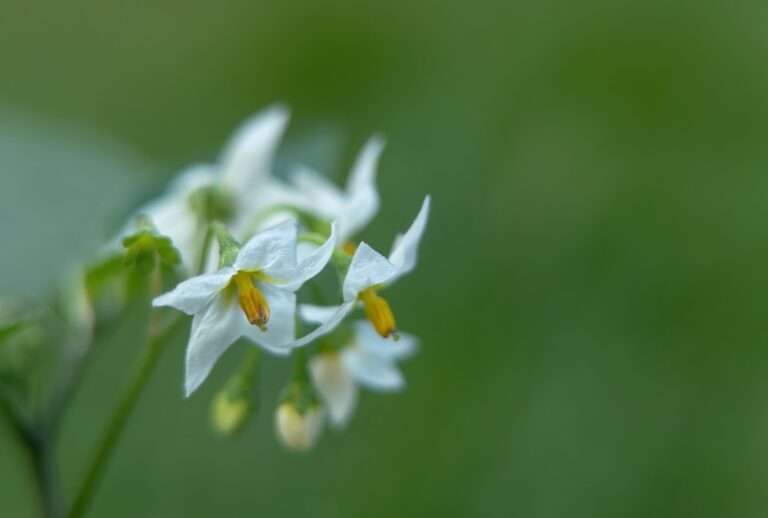Pink: Understanding the Symbolism Behind the Color

Pink is a color that has captivated and intrigued people for centuries. It is a color that is often associated with femininity, love, and tenderness. However, pink is much more than just a color. It holds significant meaning in various aspects of life, from art and design to nature and culture. In this article, we will explore the history of pink, the science behind its impact on our emotions and behavior, its significance in nature and culture, its association with gender, its role in fashion and marketing, its effects on mental health, its use in activism and social movements, and its potential in art, design, and technology. Pink is a color that has shaped our world in more ways than we may realize.
The History of Pink: From Ancient Times to Modern Day
The origins of the color pink can be traced back to ancient times. The word “pink” itself is believed to have come from the Dutch word “pinck,” which means small. In ancient civilizations such as Egypt and Persia, pink was a color associated with femininity and beauty. It was often used in cosmetics and clothing to enhance the appearance of women.
Throughout history, the use of pink has evolved in art and design. In ancient Greece and Rome, pink was used in frescoes and mosaics to depict scenes of love and romance. During the Renaissance period, pink became a popular color in paintings, symbolizing innocence and purity. In the 18th century, pink became associated with luxury and elegance, often used in fashion and interior design.
The Science of Pink: How Color Affects our Emotions and Behavior
The psychology of color suggests that different colors can have a profound impact on our emotions and behavior. Pink is often associated with feelings of calmness, warmth, and nurturing. It has been found to have a soothing effect on the mind and body, reducing stress and anxiety.
Research has shown that exposure to the color pink can have various effects on our mood and behavior. For example, studies have found that pink can increase feelings of compassion and empathy, leading to more cooperative and helpful behavior. It has also been found to have a calming effect on aggressive or anxious individuals.
The use of pink in therapy and healing has also gained popularity in recent years. Pink rooms or pink light therapy have been used to create a calming and nurturing environment for patients, particularly those suffering from anxiety or depression. The color pink is believed to promote feelings of comfort and security, aiding in the healing process.
Pink in Nature: The Significance of Pink in Flora and Fauna
Pink plays a significant role in nature, particularly in the world of flora and fauna. Many flowers, such as roses, cherry blossoms, and peonies, are known for their beautiful pink hues. Pink flowers are often associated with love, beauty, and femininity. They are also a symbol of gratitude and appreciation.
In the animal kingdom, pink is a rare color that holds special significance. Pink flamingos, for example, are known for their vibrant pink feathers. The color of their feathers is actually a result of their diet, which consists mainly of shrimp and other crustaceans. The pigment from these foods gives the flamingos’ feathers their distinctive pink color.
Preserving pink species is crucial for maintaining biodiversity and ecological balance. Many pink flowers and animals are endangered or threatened due to habitat loss and climate change. Efforts must be made to protect these species and their habitats to ensure their survival.
The Cultural Significance of Pink: How Different Societies Interpret the Color
The meaning of pink can vary greatly across different cultures. In Western cultures, pink is often associated with femininity, love, and tenderness. It is commonly used in baby showers and weddings to symbolize joy and happiness. In some Eastern cultures, such as Japan, pink is associated with cherry blossoms and represents beauty, renewal, and the transient nature of life.
Pink is also used in rituals and traditions in many cultures. In Hinduism, for example, pink is associated with the goddess Lakshmi and is considered a sacred color. In some African cultures, pink is used in traditional ceremonies to symbolize purity and spirituality.
Globalization has had a significant impact on the interpretation of pink. With the spread of Western culture and media, the association of pink with femininity has become more widespread. However, there are still cultures where pink is not traditionally associated with gender or where different shades of pink hold different meanings.
The Gendering of Pink: How Pink Became Associated with Femininity

The association of pink with femininity is a relatively recent phenomenon. In the early 20th century, pink was actually considered a more masculine color, while blue was associated with femininity. It wasn’t until the mid-20th century that the gendering of pink began to take hold.
The shift in the association of pink with femininity can be attributed to marketing and advertising. In the 1940s and 1950s, companies began using pink to market products to girls and women. Pink was seen as a way to differentiate products for girls from those for boys. This marketing strategy was successful in creating a strong association between pink and femininity.
However, attitudes towards pink and gender have been changing in recent years. Many people are challenging traditional gender norms and embracing a more fluid understanding of gender. This has led to a reevaluation of the association between pink and femininity. Pink is now being embraced by people of all genders as a color that represents self-expression and individuality.
Pink in Fashion: The Evolution of Pink in Clothing and Accessories
Pink has played a significant role in fashion throughout history. In the 18th century, pink was a popular color for men’s clothing, particularly in Europe. It was seen as a symbol of wealth and sophistication. However, by the 19th century, pink had become associated with femininity and was primarily used in women’s fashion.
In the 20th century, pink became a symbol of rebellion and nonconformity. The punk movement of the 1970s embraced pink as a way to challenge traditional gender norms and societal expectations. Pink became a color associated with individuality and self-expression.
Today, pink is a popular color in fashion, representing femininity, playfulness, and confidence. It is often used in clothing and accessories to make a bold fashion statement. From pastel pinks to vibrant fuchsias, there is a shade of pink for every style and personality.
Pink in Marketing: The Use of Pink in Advertising and Branding
Pink has long been used in marketing and branding to attract attention and evoke certain emotions. It is often used to target female consumers, as it is associated with femininity and beauty. Many beauty and cosmetic brands use pink in their packaging and advertisements to appeal to their target audience.
The use of pink in marketing has been shown to have an impact on consumer behavior. Studies have found that people are more likely to perceive products as feminine when they are presented in pink packaging. This can influence their purchasing decisions and brand preferences.
However, the use of pink in marketing has also been met with controversy. Some argue that the association of pink with femininity reinforces gender stereotypes and limits individual expression. Others argue that pink can be empowering when used in a way that challenges traditional gender norms.
The Psychological Effects of Pink: How the Color Impacts our Mental Health
The color pink has been found to have various psychological effects on our mental health. As mentioned earlier, pink is often associated with feelings of calmness and warmth. It has a soothing effect on the mind and body, reducing stress and anxiety.
The therapeutic benefits of pink have been recognized in various fields, including psychology and interior design. Pink rooms or pink light therapy have been used to create a calming and nurturing environment for patients, particularly those suffering from anxiety or depression. The color pink is believed to promote feelings of comfort and security, aiding in the healing process.
Pink has also been used in mental health treatment to help individuals manage their emotions and improve their well-being. Art therapy, for example, often incorporates the use of pink to create a sense of calm and relaxation. Pink is also used in mindfulness practices to promote self-compassion and self-care.
The Power of Pink: How Pink is Used in Activism and Social Movements
Pink has become a powerful symbol in activism and social movements. The color pink is often associated with causes related to women’s rights, breast cancer awareness, and LGBTQ+ rights. It is a color that represents strength, resilience, and solidarity.
Breast cancer awareness campaigns often use the color pink to raise awareness about the disease and promote early detection. The pink ribbon has become an iconic symbol of breast cancer awareness, representing hope and support for those affected by the disease.
In the LGBTQ+ community, pink has been embraced as a symbol of pride and visibility. The pink triangle, which was originally used by the Nazis to identify gay men in concentration camps, has been reclaimed as a symbol of LGBTQ+ rights. Pink is also often used in Pride parades and events to celebrate diversity and promote equality.
The Future of Pink: The Role of Pink in Art, Design, and Technology
Pink continues to evolve in art, design, and technology. In recent years, there has been a resurgence of interest in pink as a color that challenges traditional gender norms and societal expectations. Artists and designers are using pink in innovative and unexpected ways, pushing the boundaries of what pink can represent.
In art, pink is being used to explore themes of identity, femininity, and power. Artists are using pink to challenge traditional notions of beauty and to create a sense of empowerment. Pink is also being used in digital art and virtual reality to create immersive and interactive experiences.
In design, pink is being used to create spaces that are both functional and aesthetically pleasing. From pink furniture to pink lighting, designers are incorporating pink into their creations to create a sense of warmth and comfort. Pink is also being used in product design to create innovative and eye-catching designs.
In technology, pink is being used to create products that are both stylish and functional. From pink smartphones to pink headphones, technology companies are recognizing the demand for products that reflect individual style and personality. Pink is also being used in wearable technology to create devices that are both fashionable and practical.
Pink is a color that holds significant meaning in various aspects of life. From its origins in ancient civilizations to its role in art, design, and technology, pink has shaped our world in more ways than we may realize. The color pink has the power to evoke emotions, challenge gender norms, promote healing, and inspire social change. As we look to the future, it is clear that pink will continue to play a significant role in shaping our society and culture. Whether it’s through art, fashion, marketing, or activism, pink will continue to captivate and intrigue us for years to come.
If you’re interested in exploring more symbolism, you might find the article on the symbolism of the moon fascinating. The moon has long been associated with various meanings and interpretations across different cultures and religions. From representing femininity and intuition to symbolizing cycles and emotions, the moon holds a significant place in symbolism. To delve deeper into this topic, check out this article on symbolismhub.com.
FAQs
What is Pink Symbolism?
Pink Symbolism refers to the use of the color pink to represent various concepts, emotions, and ideas in art, literature, and culture.
What does the color pink symbolize?
The color pink is often associated with femininity, love, compassion, and nurturing. It can also represent innocence, youthfulness, and playfulness.
What are some examples of Pink Symbolism in art and literature?
In art, the use of pink can be seen in works by artists such as Yayoi Kusama, who often incorporates the color into her installations and sculptures. In literature, pink symbolism can be found in books such as “The Great Gatsby,” where the character Daisy Buchanan is often associated with the color pink.
Is Pink Symbolism limited to Western culture?
No, Pink Symbolism can be found in various cultures around the world. In Japan, for example, the color pink is associated with cherry blossoms and represents beauty and transience.
What are some controversies surrounding Pink Symbolism?
Some people argue that the use of pink to represent femininity reinforces gender stereotypes and limits the expression of gender identity. Others argue that Pink Symbolism can be empowering for women and should be celebrated.





